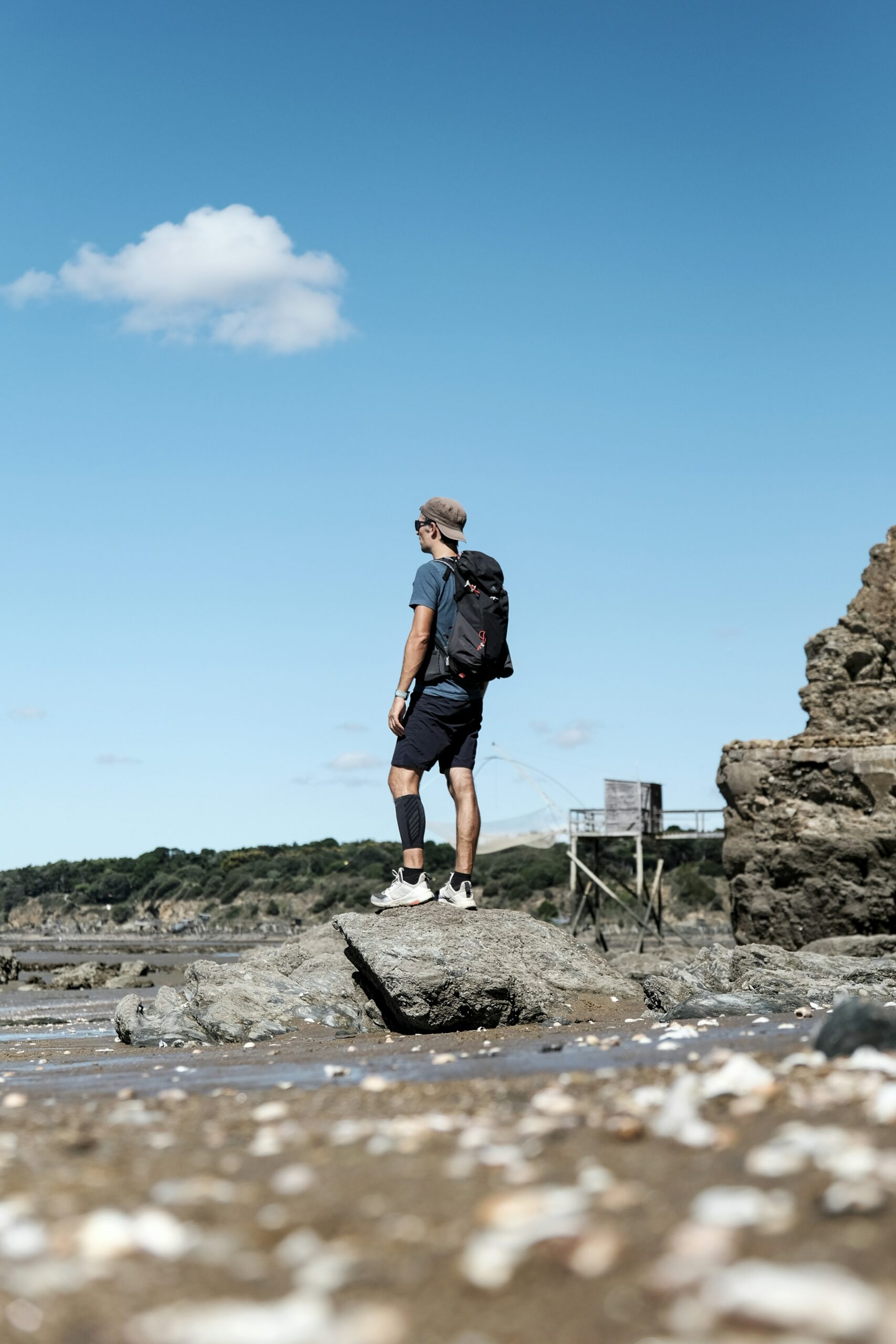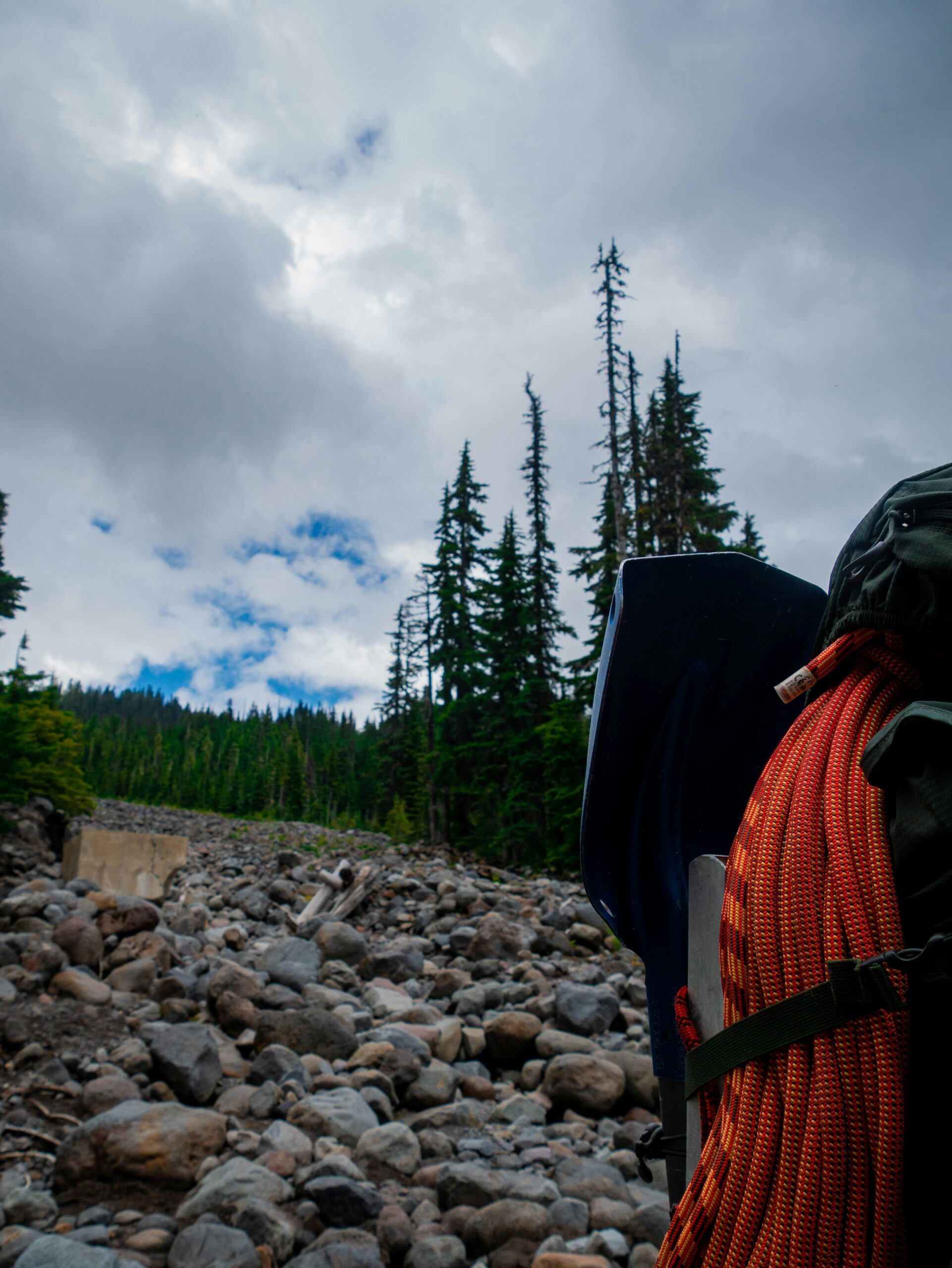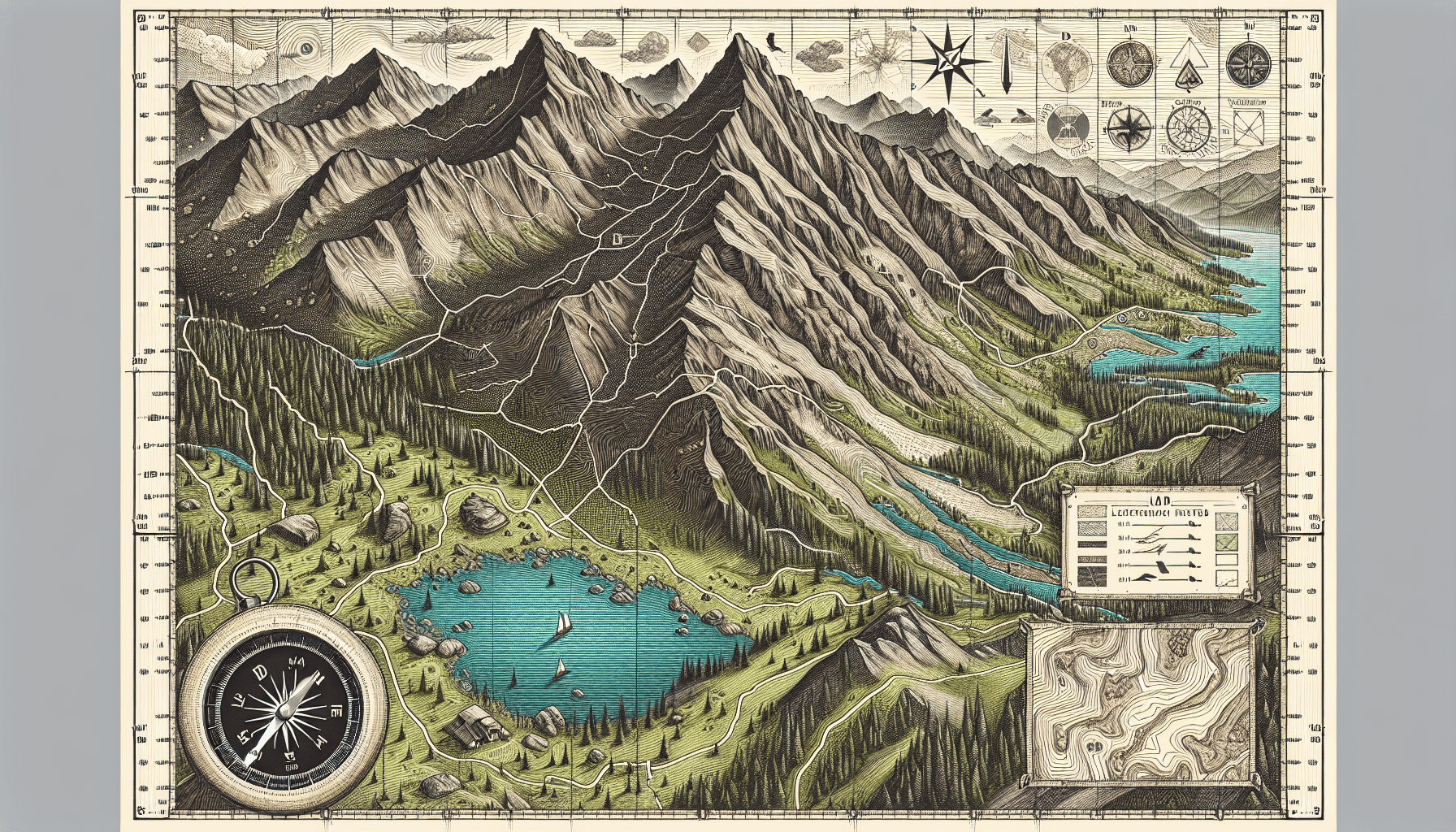Embarking on a successful backpacking adventure begins with thorough pre-trip planning. From choosing the right destination based on scenic preferences and trail difficulty to creating a realistic travel budget and obtaining necessary permits, each step is crucial for a smooth journey. Researching ecosystems, selecting optimal dates, arranging transportation, and crafting detailed itineraries are also important factors to consider. Adhering to safety measures, including packing essential items and respecting Leave No Trace principles, ensures a positive outdoor experience. By following these guidelines and being open to new experiences, you can cultivate a rewarding and unforgettable backpacking excursion. Have you ever dreamed of embarking on a thrilling backpacking adventure but felt overwhelmed by the planning process? You’re not alone! With so many factors to consider from choosing the right destination to packing essential gear, pre-trip planning can seem like a daunting task. However, fear not, as this article is here to guide you through each step of the planning process, ensuring that you have a successful backpacking adventure filled with unforgettable memories and breathtaking experiences. So, grab your pen and notepad, and let’s dive into the world of thorough pre-trip planning!

This image is property of images.unsplash.com.
Selecting the Perfect Destination
Choosing the right destination is the first step in planning a successful backpacking adventure. Consider factors such as whether you prefer a domestic or international location, your scenic preferences (mountains, forests, deserts, etc.), daily mileage you aim to cover, and the difficulty level of the trails. Researching the ecosystem of each potential destination and exploring national parks and wilderness areas can offer prime backpacking opportunities that align with your preferences.
Consider Domestic vs. International Destinations
When deciding between a domestic or international backpacking trip, think about factors such as language barriers, cultural differences, travel restrictions, and overall travel costs. Domestic trips may offer easier accessibility and fewer logistical challenges, while international trips can provide a unique cultural experience and the opportunity to explore stunning landscapes abroad.
Evaluate Scenic Preferences
Do you prefer the rugged mountains of the Rockies, the lush forests of the Pacific Northwest, or the sun-drenched deserts of the Southwest? Consider what type of scenery you find most captivating and choose a destination that aligns with your scenic preferences to ensure a rewarding backpacking experience.
Determine Daily Mileage and Trail Difficulty
Are you looking for a challenging trek that pushes your limits or a more leisurely hike that allows you to soak in the surroundings? Consider your physical fitness level and hiking experience when selecting a destination with the appropriate daily mileage and trail difficulty. Be honest with yourself about your capabilities to ensure a safe and enjoyable journey.
Setting the Date for Your Adventure
The next step in pre-trip planning is selecting a date for your backpacking adventure. Timing is crucial as it impacts the optimal season for your chosen destination, weather conditions, trail availability, and your desired trip duration. By carefully considering the timing of your trip, you can maximize your experience and avoid potential challenges along the way.
Determine Optimal Season
Research the best time to visit your chosen destination based on weather conditions, trail accessibility, flora, and fauna sightings. Some trails may be closed or dangerous during certain seasons, so plan your trip accordingly to ensure a safe and enjoyable experience.
Choose Desired Trip Duration
Decide how many days you want to spend on the trail and consider factors such as travel time to and from the destination, rest days, and possible delays. Be realistic about your endurance level and the amount of time you can dedicate to the adventure to ensure that you can complete the trip comfortably within your desired duration.
Estimating Your Travel Budget
Creating a realistic travel budget is an essential part of pre-trip planning that helps you estimate expenses, make informed financial decisions, and avoid overspending. By carefully planning your budget, you can ensure that you have enough funds to cover transportation, permits, gear, food, lodging, and any unexpected expenses that may arise during your backpacking adventure.
Identify Expenses
Break down your expenses into categories such as transportation (flights, rental cars, shuttle services), permits (park entrance fees, camping permits), gear (backpack, tent, sleeping bag, clothing), food (meals, snacks, cooking supplies), lodging (campsite fees, hotel stays), and miscellaneous items (first aid kit, emergency supplies). By estimating the costs associated with each category, you can create a comprehensive budget for your trip.
Make Financial Decisions
Consider your financial resources and limitations when planning your travel budget. Determine how much you can afford to spend on each aspect of the trip and prioritize essentials such as permits, gear, and food. Look for ways to save money, such as booking flights in advance, opting for budget-friendly accommodations, and sharing gear with fellow backpackers to reduce costs.
Obtaining Permits for Popular Trails
Many popular backpacking trails require permits to control visitor numbers, protect the environment, and ensure visitor safety. Obtaining a permit involves understanding regulations, application processes, reservation deadlines, and permit availability. By securing the necessary permits in advance, you can enjoy a hassle-free and compliant backpacking experience on popular trails.
Understand Regulations
Familiarize yourself with the regulations and restrictions related to permits for the trail you plan to hike. Regulations may include group size limits, camping restrictions, leave no trace principles, waste disposal guidelines, and wildlife protection measures. By adhering to these regulations, you can help preserve the environment and minimize your impact on the ecosystem.
Navigate the Application Process
Research the application process for obtaining permits, including reservation deadlines, lottery systems, first-come, first-served permits, and online application portals. Some permits may be in high demand and require advance planning, while others may be readily available on a walk-up basis. Familiarize yourself with the specific requirements for each trail to secure your permit in a timely manner.

This image is property of images.unsplash.com.
Arranging Transportation to Your Destination
Once you have selected a destination and secured permits for the trail, the next step is to arrange transportation to your starting point. Consider factors such as modes of transport (car, bus, train, plane), parking options, shuttle services, and trailhead accessibility. By planning your transportation in advance, you can ensure a smooth journey to the trailhead and back home after completing your backpacking adventure.
Consider Modes of Transport
Decide how you will travel to your destination based on factors such as distance, cost, convenience, and environmental impact. Choose a mode of transport that aligns with your budget and schedule, whether it’s driving your car, taking public transportation, renting a vehicle, or flying to a nearby airport. Consider the availability of parking at the trailhead and any shuttle services that may be required for transportation.
Explore Parking Options
Research parking options at the trailhead, including designated parking areas, parking permits, parking fees, and overnight parking regulations. Some trailheads may have limited parking spaces, seasonal closures, or parking restrictions, so plan accordingly to ensure that you have a safe and secure place to leave your vehicle during your backpacking trip.
Crafting Your Backpacking Itinerary
Creating a detailed backpacking itinerary is essential for planning your daily mileage, rest stops, camping locations, and water sources along the trail. Utilize trail apps, maps, guidebooks, and online resources to gather information on trail conditions, elevation gain, mileage, resupply points, camping zones, and points of interest. By crafting a well-thought-out itinerary, you can maximize your time on the trail and stay organized during your backpacking adventure.
Plan Daily Mileage
Determine the daily mileage you plan to cover based on factors such as trail difficulty, elevation gain, fitness level, and desired pace. Break down your itinerary into manageable daily segments with specific mileage goals, rest stops, and campsite locations. Consider factors such as water availability, terrain challenges, and daylight hours when planning your daily mileage to ensure a safe and enjoyable experience.
Utilize Trail Apps
Use trail apps and GPS devices to navigate the trail, track your progress, and locate important points of interest such as water sources, campsites, lookout points, and emergency exits. Trail apps provide real-time information on trail conditions, weather updates, elevation profiles, and distance markers to help you stay on course and make informed decisions while hiking. Download trail maps and offline resources in advance to avoid connectivity issues on the trail.

This image is property of images.unsplash.com.
Gathering and Organizing Backpacking Gear
Selecting and organizing your backpacking gear is a crucial step in pre-trip planning that involves considering factors such as financial constraints, climate and terrain conditions, gear weight, functionality, and durability. Conduct gear inspections, perform test runs, and pack efficiently to ensure that you have all the essential equipment for a safe and comfortable backpacking adventure.
Consider Financial Constraints
Factor in your budget when selecting backpacking gear and prioritize essentials such as a backpack, tent, sleeping bag, sleeping pad, clothing, footwear, cooking supplies, and safety gear. Research budget-friendly options, compare prices, and look for discounts, sales, and second-hand gear to save money while still obtaining high-quality equipment. Invest in durable gear that will last for multiple trips and withstand challenging conditions on the trail.
Assess Climate and Terrain Factors
Research the climate and terrain conditions of your destination to determine the type of gear you need for the trip. Consider factors such as temperature fluctuations, precipitation levels, wind exposure, elevation changes, terrain ruggedness, and wildlife encounters when selecting gear for your backpacking adventure. Pack versatile and multi-functional gear that can adapt to changing weather conditions and terrain challenges to ensure that you stay safe and comfortable throughout the trip.
Creating a Backpacking Meal Plan
Designing a backpacking meal plan involves balancing weight, packing lightweight, shelf-stable, calorie-dense, and nutritious food items, and ensuring that you have enough fuel to sustain your energy levels while hiking. Consider factors such as meal variety, cooking methods, portion sizes, caloric intake, dietary restrictions, and hydration needs when planning your meals for the trip. Pack compact and convenient food options that are easy to prepare, store, and consume on the trail.
Balance Weight and Nutrition
Choose lightweight and compact food items that provide essential nutrients, calories, and energy for sustained hiking. Opt for shelf-stable and dehydrated foods that require minimal preparation and cooking time, such as instant oatmeal, freeze-dried meals, energy bars, nuts, dried fruits, nut butter packets, and electrolyte drinks. Pack a combination of carbohydrates, proteins, fats, vitamins, and minerals to meet your nutritional needs and replenish your energy stores during long days of hiking.
Pack Calorie-Dense and Nutritious Foods
Select calorie-dense and nutrient-rich foods that are high in energy and help you maintain your stamina while hiking. Pack foods with a high caloric content per serving, such as nuts, seeds, chocolate, cheese, jerky, peanut butter, granola, instant coffee, and trail mix. Include foods that are rich in complex carbohydrates, healthy fats, and lean proteins to fuel your muscles, sustain your endurance, and aid in post-hike recovery. Bring a variety of flavors and textures to keep your meals interesting and satisfying throughout the trip.

Ensuring Safety on the Trail
Safety is paramount when embarking on a backpacking adventure, so it’s essential to carry essential items that can help you navigate, communicate, treat injuries, and handle emergencies while hiking. Pack a first aid kit, navigation tools, emergency supplies, personal protective equipment, and communication devices to ensure that you are prepared for any potential challenges on the trail. Prioritize safety and be proactive in mitigating risks to have a safe and enjoyable backpacking experience.
Pack a First Aid Kit
Include essential items in your first aid kit such as bandages, gauze pads, adhesive tape, antiseptic wipes, antibiotic ointment, pain relievers, blister treatment, tweezers, scissors, moleskin, insect repellent, sunscreen, and personal medications. Customize your first aid kit based on your medical history, allergies, and potential health concerns to address common injuries, illnesses, and emergencies encountered while backpacking. Carry your first aid kit in a waterproof container and keep it easily accessible in your backpack for quick emergency response.
Carry Navigation Tools
Bring navigation tools with you such as a map, compass, GPS device, trail app, guidebook, and trail markers to help you navigate the trail, track your progress, and find your way in case of getting lost. Familiarize yourself with the trail map, study the route in advance, and pay attention to trail markers, landmarks, and directional signs to stay on course and avoid getting off track. Use a combination of navigation tools to cross-reference information and ensure accuracy in your route planning and decision-making while hiking.
Prepare Emergency Supplies
Pack emergency supplies in your backpack such as a whistle, signaling mirror, emergency blanket, headlamp, extra batteries, fire starter, multi-tool, duct tape, rope, and space blanket to assist you in survival situations, unexpected delays, or adverse weather conditions. Store your emergency supplies in a waterproof container, keep them easily accessible in your pack, and inform your hiking partners about the location and contents of your emergency kit for coordinated response in case of emergency. Be prepared for changing weather conditions, injury incidents, wildlife encounters, and other unforeseen situations by carrying essential emergency supplies at all times.
Respecting Leave No Trace Principles
Practicing Leave No Trace principles is essential for preserving the environment, minimizing your impact on the ecosystem, and promoting sustainable backpacking practices. Follow the seven principles of Leave No Trace – plan ahead and prepare, travel and camp on durable surfaces, dispose of waste properly, leave what you find, minimize campfire impacts, respect wildlife, and be considerate of other visitors. By adopting Leave No Trace practices, you can protect natural resources, wildlife habitats, and cultural heritage sites while enjoying the beauty of the outdoors responsibly.
Plan Ahead and Prepare
Research the rules and regulations of the trail, obtain necessary permits, check weather forecasts, pack appropriate gear, and plan your route in advance to minimize your impact on the environment. Consider the carrying capacity of the trail, campsite availability, waste disposal options, and wildlife protection measures when planning your backpacking trip. Be proactive in preventing human-caused impacts on the ecosystem by following Leave No Trace guidelines and making informed decisions that prioritize environmental stewardship while hiking.
Travel and Camp on Durable Surfaces
Stay on designated trails, established campsites, and durable surfaces to prevent soil erosion, vegetation damage, and habitat destruction in sensitive areas. Avoid trampling on fragile vegetation, creating social trails, shortcutting switchbacks, or camping in unauthorized areas to protect natural resources and preserve the scenic integrity of the landscape. Follow trail markers, stay within the boundaries of designated campsites, and respect posted signs to minimize your environmental footprint and maintain the beauty of the trail for future generations to enjoy.

Enjoying the Journey and Being Flexible
While thorough pre-trip planning is essential for a successful backpacking adventure, it’s equally important to enjoy the journey, be present in the moment, and remain flexible in your plans. Embrace the unexpected, savor the beauty of nature, connect with fellow hikers, and appreciate the challenges and triumphs of backpacking. Stay open to new experiences, adapt to changing conditions, and make the most of every moment on the trail to create lasting memories and meaningful connections with the outdoors.
Embrace the Unexpected
Be open to surprises, detours, and spontaneous moments of joy that make backpacking adventures unforgettable and enriching. Embrace the unexpected encounters with wildlife, the sudden weather changes, the breathtaking views around the corner, and the serendipitous connections with fellow hikers along the trail. Approach each day with a sense of wonder, curiosity, and gratitude for the unique experiences that only backpacking can offer, and treasure the memories you create along the way.
Savor the Beauty of Nature
Immerse yourself in the natural beauty of the outdoors, from towering mountains and cascading waterfalls to ancient forests and starlit skies. Take time to pause, breathe in the fresh mountain air, listen to the sounds of nature, and marvel at the wonders of the wilderness that surround you. Engage all your senses, from the vibrant colors of wildflowers to the crisp taste of alpine water, and appreciate the beauty of the natural world that rejuvenates your spirit and nourishes your soul on the trail.
Connect with Fellow Hikers
Build camaraderie, share stories, and form bonds with fellow hikers you encounter on the trail, creating a sense of community, support, and belonging in the outdoors. Exchange tips, recommendations, and experiences with other backpackers, learn from their insights and perspectives, and celebrate the shared passion for exploration and adventure. Foster connections with like-minded individuals who inspire, motivate, and uplift you on your backpacking journey, forming friendships that transcend geographical boundaries and unite kindred spirits in the wilderness.
Appreciate the Challenges and Triumphs
Celebrate the challenges you overcome, the milestones you achieve, and the personal growth you experience while backpacking, recognizing your resilience, determination, and inner strength. Embrace the physical exertion, mental fortitude, and emotional resilience required to navigate rugged terrain, unpredictable weather, and unforeseen obstacles on the trail. Acknowledge the triumphs and victories – big or small – that mark your progress, define your journey, and shape your character as a backpacker who thrives in the face of adversity and perseveres through difficulties with grace and courage.
By following these detailed guidelines and recommendations, you can embark on a successful backpacking adventure that is well-planned, safe, and rewarding. From selecting the perfect destination and setting the date for your trip to estimating your travel budget, obtaining permits, and arranging transportation, thorough pre-trip planning is the key to a memorable outdoor experience. Remember to respect Leave No Trace principles, prioritize safety, and stay flexible in your plans to enjoy the journey, connect with nature, and create lasting memories on the trail. So, pack your bags, lace up your hiking boots, and get ready for an unforgettable backpacking adventure filled with breathtaking landscapes, thrilling challenges, and transformative experiences that will stay with you long after the journey ends. Happy hiking!
